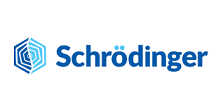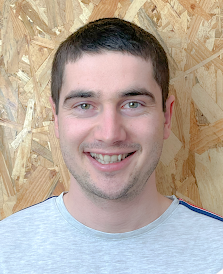I studied at the Universities of Hanover and Göttingen, graduating with a master’s degree in chemistry, followed by a PhD in Macromolecular Chemistry at the University of Bayreuth. Since 2016, I've been working at Miele's R&D department in Bielefeld in the laboratory for rubber and plastics. Since the beginning of 2022, I'm main responsible for materials consulting in the field of elastomers for all Miele business units.


Elaheh Sedghamiz is a Senior Scientist in Schrödinger's Materials Science team, having earned her Ph.D. in computational chemistry from the University of Isfahan, Iran. Her Ph.D. research focused on molecular dynamics simulation of materials, highlighting her expertise in this area. During her three-year postdoctoral position at KIT, Karlsruhe, she developed a model to study the mechanical properties of crosslinked polymer networks obtained from 3D direct laser writing. Since joining Schrödinger in 2022, her research has centered around all-atom and coarse-grained MD simulation for different material groups.


I am 31 years old.
I did my engineering studies at the School of Chemistry in Strasbourg, specializing in polymers. Following my graduation, I further advanced my academic journey by completing a Ph.D. in Materials Science.
I have worked in Decathlon since 2022 in the Plastic & Composite department as a raw material engineer. My scope of work encompasses silicone elastomers, TPEs and polyurethane elastomers.
2014 - 2017 Apprenticeship as a process mechanic at BARLOG Plastics GmbH
2014 - 2019 Mechanical engineering studies in plastics technology
2017 - 2019 Employment as a process mechanic at BARLOG Plastics GmbH
2019 - 2022 Calculation engineer with a focus on component design and optimization using simulations at BARLOG Plastics GmbH
Since April 2022 Application Engineer at SIGMA Engineering GmbH
Daily tasks: Engineering projects, Training courses for our customers, Workshops for potential customer, Technical support for our customers, Development work for the ongoing improvement of our software
Bruno Cuocci is a Silicone Rubber specialist with 40 years industry experience. Initial career was spent at a silicone rubber fabrication company before joining Dow Silicone Italy in 2003. From 2003 to 2016 Bruno worked as an AETS within Dow covering HCR, LSR, F-LSR and FSR technologies, gaining deep application knowledge, numerous technical achievement awards and patents. Most recently Bruno has been supporting Dow Silicones HTV product line and in 2023 became Dow’s Global Application Technology Leader for Energy Transmission and Distribution.
In 2022 Sindija Armanovica joined the Public Affairs team of the European Chemical Industry Council (Cefic). As part of the Specialty Chemicals cluster, she leads the downstream user outreach for the sector group Silicones Europe. Prior to joining Cefic, Sindija was a Senior Officer at the Ministry of Transport in Latvia, ensuring the implementation of adopted EU legislation.
Prof. Dr. Wojciech Pisula joined Evonik Industries in 2006 and became Director Applied Technology Silicone at the Business Line Silica in 2016. In 2005, he gained his PhD in chemistry at the Max Planck Institute for Polymer Research in Mainz and in 2015 his habilitation in material science at the Technical University of Darmstadt. Additionally to his industry position, he is Full Professor at the Lodz University of Technology in Poland, Editor of Synthetic Metals and Editor-in-Chief of Electronic Materials.
Nicole Holzmayr has been working for HOFFMANN MINERAL for 23 years. After her apprenticeship as a chemical laboratory assistant and 2 years in the quality management, she started to work on fillers in elastomers as an application engineer. In 2012, she successfully completed her postgraduate studies in rubber technology at the German Institute for Rubber Technology (DIK). With that 17 years of experience in rubber, she joined the sales team of Hoffmann Mineral in September 2022 where she is responsible for the elastomer industry in Germany, Austria and Switzerland and, in cooperation with the distributors, cares for the markets in France, Italy, Malta, Greece and Cyprus for all applications.
Dietmar Waizenauer received his degree ‘Bachelor of Science in Engineering’ at the University of Applied Sciences Upper Austria.
He has over 17 years of experience in LSR processing and gained a lot of know-how which includes development and design of fully automatic production cells for LSR, HCR and Rubber products as well as the development of the process equipment, sales and marketing.
His employment history:
NEXUS Elastomer Systems GmbH (former Nexus Automation GmbH), Eberstalzell, Austria, 2007 to present
Founder, Managing Partner and CBDO
Responsible for technical sales, product and new business development.
HEFNER Elastomere Technik GmbH, Weisskirchen, Austria, 2001 to 2007,
Head of Automation Department
Development and design of Turn Key production cells for processing LSR material.
VOEST ALPINE Stahl AG, Linz, Austria, 1999 to 2001
Electrical Maintenance for Galvanizing Plants / Steel Coating Lines
Laura Kuhlmann is working as a Scientist at the German Plastics Center (SKZ) in Würzburg, Germany.
She has a Master of Science degree in Applied Chemistry from Georg-Simon-Ohm University of Applied
Sciences in Nürnberg and is currently finishing her doctorate in Analytical Chemistry at FriedrichAlexander University of Erlangen-Nürnberg, while already pursuing her career at SKZ. During her
studies she has already gained practical experience in elastomer testing and polymer formulations for
various applications. As a Scientist at SKZ she is currently managing different research projects, one of
them being ‘SiliComp’ which aims at developing continuous compounding processes for high
consistency rubber.
Vocational education:
process technician for plastic and rubber engineering
Professional experience:
7 years: process technician and shift leader in thermoplastic industry
5 years: process technician for rubber material development at Freudenberg Sealing Technologies and part-time further education to “Geprüfter Industriemeister Fachrichtung Kunststoff und Kautschuk”
since 7 years: Technical Sales for rubber & rotational molding release agents at Chem-Trend, responsible for sales area DACH, Hungary and Slovenia
After completing his studies and earning a Ph.D. in Mechanical Engineering with a focus on Polymer Engineering, Clemens worked for several years in the development and implementation of process technology for polymer processing in the automotive supply industry. Today, he serves as the Managing Director responsible for technology at the injection molding machine manufacturer LWB.
Patrick Beyer studied chemistry at the University of Mainz, Germany, where he obtained his PhD in 2007 in polymer chemistry with a thesis on "Liquid Crystalline Elastomers". In 2007 he joined the Dow Silicones Deutschland GmbH, where he is working as a Research Scientist in the field of Silicone Elastomers. In this role he is leading research and development of new Silicone Elastomer technologies, as well as supporting commercialization of these products into various markets and applications.
Specialty Tires Expert
Senior Technical Advisor of Pelmar.
Master's degree in Engineering, (1994-INSA Lyon, France)
OTR, Industrial, Construction, Agricultural, TBR Tire Design and Development
Prior to joining Pelmar Engineering, more than 25 years served at Tier 1 Tire Companies
(Goodyear, Maxam) in various technical positions. Pelmar Engineering Germany GMBH
Andrew Cheng is the Director of Global Business Development for ECO USA and has more than 12 years experience in the silicone recycling industry. Having worked with numerous silicone manufacturers throughout the world, he has extensive knowledge of silicone with emphasis on its recyclability and sustainability. He was heavily involved in the development and construction of ECO USA’s recycling facility located in West Virginia, USA. This facility was fully commissioned in 2018 and until now remains the only silicone recycling plant in North America. As one of the pioneers of the silicone recycling industry, Andrew is fully committed to expanding ECO USA’s presence and works feverishly to educate professionals within the industry about the environmental benefits of collecting silicone for recycling as well as its potential for helping businesses reach carbon neutral goals.
Thorsten Häuser studied mechanical engineering at the University of Essen from 1996 to 2001, specializing in plastics technology. He wrote his diploma thesis at Ohio State University in Columbus/Ohio at the Edison Welding Institute (EWI) in the field of micro laser welding of polycarbonate. He first came into contact with silicone elastomers in 2001 when he moved to the IKV (Institute for Plastics Processing) at RWTH Aachen University. There he took over the working group for “injection molding of cross-linking molding compounds” and conducted research in the areas of gas assisted injection molding of silicone elastomers, micro injection molding and the physical foaming of LSR. In 2006, he then moved to Momentive Performance Materials in the application development center (ADC), where he supported automotive and medical technology customers. In 2010, he moved to Shanghai, where he became Application Development Manager Asia, with the responsibility for setting up a technology center for Asian/Oceanic customers. From 2013 to 2022 he worked in various roles at Momentive but always with a maximum focus on innovation and customers. After a 2-year intermezzo at Dongyue Ltd. as Senior Technology Development Leader for silicones and membranes, he joined ELMET Elastomer GmbH in July 2023 as Head of Technology, where he and his team research and develop in the areas of process development, tooling technology as well as handling and dosing technologies.
Thomas started his education as an apprentice for plastic processing engineer at ENGEL in 1995. In 1998 he moved to the ELAST department where he was responsible for customer training, mould start up´s, mould trials, development trials, and troubleshooting in house and at customers all over the world.
In 2010 he then moved to the application office where he was responsible for machine workouts, project evaluations, and for managing R&D projects.
Since September 2014 he began working in sales department as Senior Area Sales Manager responsible for ELAST, LSR, Solid Silicone, and Thermoset machines.
Patrick Buberl is Co-Founder and Managing Director Quality at Psilkon since October 2017.
He started his professional career as Process Engineer in the field of silicone manufacturing.
Later on he got promoted to Head of Program Management and Global Head of Industrialization.
Besides Psilkon, Patrick is also shareholder and CEO of HN Maschinenhandel in Neustadt/ Pfalz, a specialist for stamping devices and cutting technologies.
o Frank Fuchs is the Head of Sales at ENTEX where he is responsible to promote the advancements of the related design evolution of the planetary roller extruder. Before working in sales, Frank Fuchs has graduated as Dipl.-Ing. mechanical engineering with subject polymer processing from IKV at RWTH Aachen. With his engagement in the plastics industry and now ENTEX he has more than 20 years’ experience in the fields of polymer research, polymer processing and quality control. Apparently, the ENTEX Planetary Roller Extruder convinced him, so here we are today.
Ulrich Trog studied Industrial Engineering and Mechanical Engineering at the Technical University of Graz and graduated with a thesis on innovation services. As Production Manager at the Australian branch of the ACO Group, a German-based manufacturer of products for the construction industry, he was responsible for a total budget of €2 million and a team of 25 people. In this role he introduced a new product line and led his team from invention to mass production. At JOANNEUM RESEARCH, Ulrich Trog was initially involved in the company's research planning and then moved to the MATERIALS Institute, where he is responsible for business development and commercialisation.
Becoming a toolmaker with master degree
Owner of a toolshop for 8 years
Head of toolshop and development in a mid-size company mainly for medical and cosmetics
Managing director in a company for servo-driven solutions in and around an injection mold
Since 2019 in EWIKON as a Product-Manager for CoolShot, a cold runner system for silicone molding, and as a Key Account manager.
If you would like to view further details of each presentation, please download a copy of the programme using the button below.